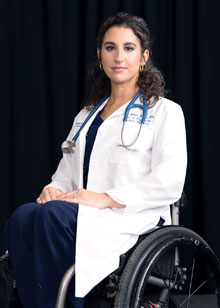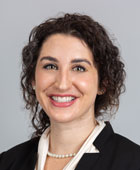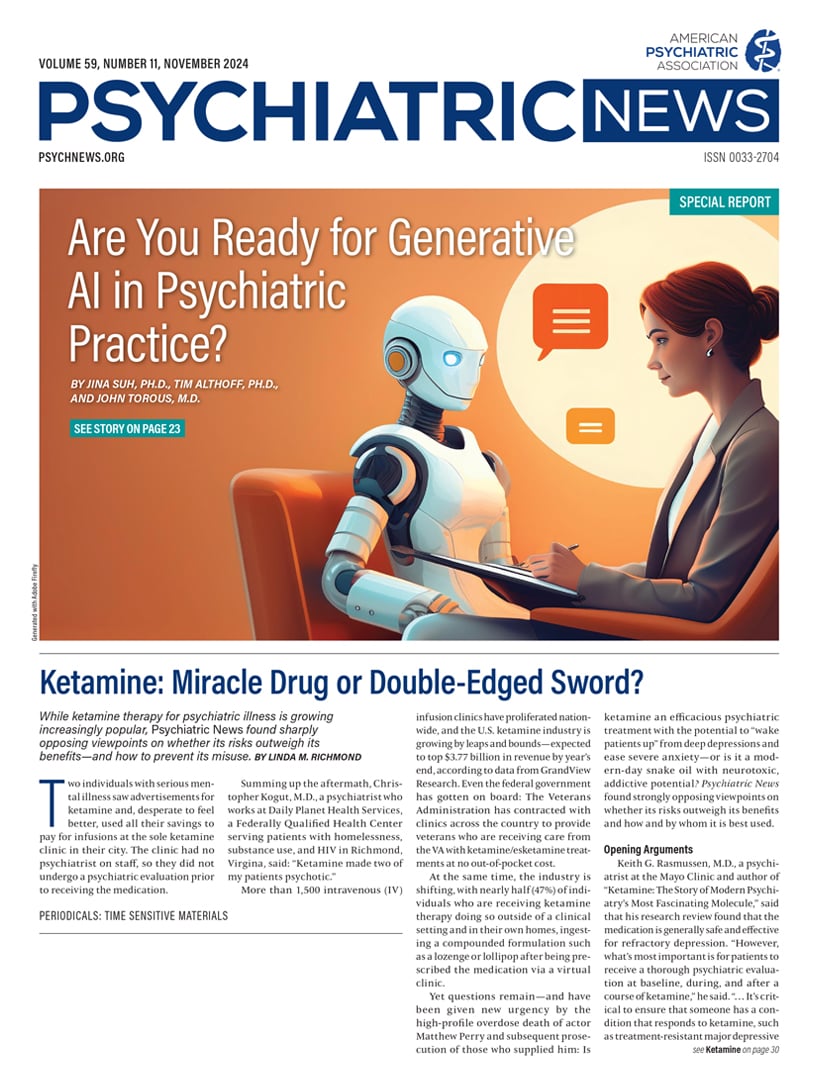As I pulled open the heavy doors to the entrance of the convention center for my first professional national conference, a heavy weight dropped in my stomach. I sat in my wheelchair, facing the impressive staircase that greeted me. Already sweaty from the roll getting to the center, I pushed down the hallway past the stairs in search of an elevator that would take me up to the meeting, where I hoped that, finally, I would meet other psychiatrics or trainees navigating medicine with a disability.
Much has been written about the lived experience of women, people of color, and other underrepresented minority populations, their entrances and hurdles in becoming practitioners of medicine (Campbell, 2018). While their stories mirror those of people with visible and invisible disabilities, they diverge in other powerful ways. Clinicians and providers with disabilities are held to the same functional standards as their colleagues, but with little guidance given to training institutions on what accommodations, if any, they should receive. This gap leaves disability open to bias and further contributes to feeling marginalized.
As a trainee, I often have the experience of being just able-bodied enough to be accepted to practice medicine yet unsure of how to navigate the changed patient encounters from my different position. This article aims to share a perspective of living with a disability, including the complications and nuances of being a physician in this context.
‘So, Doc, What Happened to You?’
I am thankful that, in my training program with Ed Kantor, M.D., at the Medical University of South Carolina (MUSC), my spinal cord injury is an accepted and encouraged influence in my practice. My direct experience of pain, trauma, recovery, and loss has built an unmatched educational framework in my patient care. However, perceptions of inferiority and questions of my competence remain, tinting the objective lens of the psychiatric interview for me as the examiner while limiting my ability to become a “blank slate” for the patient.
How do you train and practice psychiatry with these abstract barriers when the physical barriers of inaccessibility remain? While patient areas have widened doorways and barrier-free entry, the physician workroom typically is tucked into an inaccessible storage space. Why don’t staff bathrooms have grab bars for transfers? How do I manage the physical fatigue from navigating endless floors, wings, and units of different hospitals when I’m on a consult-liaison rotation?
Every heavy, “staff-only” door that I have to slam my wheelchair against to open is a reminder from the institution of medicine that clinicians aren’t supposed to be the disabled ones. But, during the course of my training, I’ve gathered a list of patient experiences related to my disability, leaving me with questions my able-bodied attendings can’t answer. Even the mentors I’ve found in the disability community trained in other specialties and haven’t had the interactions with psychiatry patients that I have. The ever-present question “So, Doc, what happened to you?” and my decision to answer or not remains the first hurdle I have to cross with every patient interaction.
How do I define boundary crossing in the delicate relationship between patient and doctor? Am I allowed the same privacy as my colleagues, even as that might risk damaging potential opportunities to build trust? We have social norms that govern appropriate conduct regarding people’s ethnicity, race, and gender, among other traits, but there is not yet a collective agreement regarding disabilities.
In more traditional psychotherapy treatments, frequent boundary crossings may be indicative of personality pathology. The patient-doctor encounter is by nature patient-focused, and by deflecting their curiosity, am I rejecting an offer to connect—or will I retraumatize myself by disclosing information that can’t be casually addressed? What do I tell the suicidal patient who tells me I make them feel worse because I never gave up on my life? Can I still trust my diagnostic assessment if my interview was complicated by the patient’s prejudice against what one acute patient described as “cripples and mouth breathers”?
Alone at the Conference
Other providers in mental health have reflected on the changed patient interaction they have experienced. For example, patient reactions to visible pregnancies, while generally positive, elicited strong emotions and sometimes revealed fears of abandonment in favor of a baby (Tinsley and Mellman, 2003). For other interactions, providers’ pregnancies brought new challenges when the pregnancy had complications or if the patient had experienced a complicated pregnancy or fetal demise. The physical representation of the provider is a fundamental part of forming a patient alliance, and similarities and differences with body shape, color, and functionality are open for reflection from the patient, including the potential to introduce bias (Puhl, et al., 2013).
It was observations and questions such as these that made me eager to meet a fellow psychiatrist with similar limitations at a large annual conference. But without accessible transportation, it took me twice as long to get across the city, and I missed event after event. I sat alone and watched people walk up the escalators and flights of stairs to different parts of the conference, too tired to roll to the end of the venue to find the elevator. I wanted to ask a fellow wheelchair user, is this how it is? Is this what I should expect in my career at the national level? We’re still alone?
But there wasn’t anyone around me to ask. I pointed out these discrepancies to my peers, who were sympathetic but otherwise had no guidance and wanted to return the conversation to happier topics. I tried to remember that I came to the conference with the aim of networking and engaging in conversations about my research goals—and not offering the first impression of being a complainer.
As part of a program dedicated to diversity, I attended meetings throughout the conference where mentees could find mentors. Around me, tables of young psychiatrists met with mentors of similar race and ethnicity. The meeting rooms were crowded and I listened to conversations at the tables close to me, but couldn’t navigate my wheelchair between them to introduce myself. A flashback to the cafeteria in high school crossed my mind as I seated myself at the closest table, attempting to balance my food on my lap, alone.
An Absence of Representation
I hope to bring awareness to the absence of disability representation in medicine and initiate a conversation regarding the need for disability representation in leadership organizations that represent the field of psychiatry. Leaders with lived experiences of disability bring unique perspectives and insights that help shape policies, programs, and services to be accessible and equitable, fostering an inclusive and empathetic system that addresses the needs of all individuals. They challenge stigmas and misconceptions surrounding disabilities, ensuring that mental health initiatives are grounded in real-world understanding. By including voices from the disability community in leadership, organizations can create more effective, responsive care models that reflect the true diversity of human experiences, improving mental health outcomes for everyone.
Although representing my disability is not the role I seek to define my career, without representation there will be no change. I feel responsibility to bring awareness to these deficits in medicine and psychiatry for my community. I want an accessible place setting waiting for me at the table of the next conference, to make sure I don’t end up waiting at the door any longer.
I would like to acknowledge that this piece was written with support and encouragement from Erin Seery, M.D., assistant professor and associate program director of the psychiatry residency at MUSC, and Chris Celano, M.D., assistant professor and associate director of the Cardiac Psychiatry Research Program at Massachusetts General Hospital. ■


